- Blue-green design with chicken. Artist: Puseletso Molaba; photo: Carina Beyer
- Chicken in window sill. Artist: Malefu ‘Martha’ Moloi; photo: Carina Beyer
- Dotted home in sunset landscape. Artist: Mmapitso ‘Alinah’ Hlalele; photo: Carina Beyer
- Purple/yellow/pink geometric design at dawn. Artist: Teenager artist trio…Mapasata ‘Penny’ Mofokeng, Roselina Malinga and Silindile Magudulela; photo: Carina Beyer
- Pink and green stylized flower design. Artist: Tshepiso ‘Josinah’ Nkabinde; photo: Carina Beyer
- Kettle in window sill. Artist: Nomgqibelo Monareng.; photo: Carina Beyer
‘Matsooana Sekokotoana is inspired by the litema designs on the homes of her country, which reflect daily life in the villages of Lesotho.
(A message to the reader in English.)
(A message to the reader in Sesotho.)
What I love most about art is that it knows no boundaries. The past and the present easily co-exist harmoniously. In Sesotho culture, there are certain practices that are no longer found today, such as the traditional use of litema. This, therefore, puts the litema both as a practice and the actual designs in danger of being lost as part of our cultural heritage. Can there be a way of saving these designs? The answer is yes. We can save these designs by incorporating them into our contemporary creative works, and the heritage lives on.
What are these Litema?
Litema are the designs women used to decorate their homes with, mostly on the outside walls. Traditionally, Basotho homes will have the whole wall or some parts of the wall hand plastered with mud, then overlaid in cow-dung and mud, at times with red soil. It is important to know that the use of cow-dung was mainly to strengthen the mud. With this mix, the walls and the floor will not need plastering for a while as the dung holds the mud mixture strongly together. Litema designs will then be engraved on the wall or floor while it is still wet, and this was really a pride of every woman and girl to have the best and well-made designs in their homes. On the outer walls, they would even use different colours of stones to create litema, which look like a kind of mosaic. This tradition is no longer practised in most parts of the country as our lives have evolved over time and we no longer build houses the way we used to in the past. What remains are the designs as our cultural heritage. Now we need to preserve this art form.
Lately, it has come very clear to many Basotho that there are a number of ways to salvage the litema as our cultural heritage and keep them alive in the contemporary world. Women have long started using the litema motifs in their weaving; they started appearing in mohair weavings of wall hangings of which some will actually have the scenery of the Basotho home state. They also appeared in their woven rugs and mats, while some started making prints of litema motifs on leather for making products like handbags, cushions and the likes.
The interesting thing about litema is that the inspiration cames from the environment and daily life. They are then interpreted into geometric form then repetitive patterns. Litema can represent maize, birds, water, mountains and even the different patters girls used to make when platting the hair. One or more patterns could be used at a time, as long as they looked well together.
- Lihlaba le Boliba tsa Lesotho
- ‘Mastooana Sekokotoana
- ‘Mastooana Sekokotoana
- ‘Mabafokeng Kolobe Ceramic tile with litema mounted on a wooded block
As a way to continue on preserving litema as our cultural heritage, we represent them in different media, like tapestry, ceramics and others. In this work, the ceramic plate is my “canvas” on which I recreate the litema. I’ve used two different designs, done in such a way that they work together harmoniously. On the well of the plate is the litema named boliba, meaning “deep waters” and on the wedge is the litema named Lihlaba, which means “mountains” or hills. The two litema reflect the mountains that contain or enclose the water. This is the kind of scenery you are sure to see when you go up in the highlands of Lesotho. Even though the litema are abstract, they are the geometric interpretation of real life.
I chose two of the litema to combine to represent of Lesotho. Lesotho is known as a mountainous country which also has a lot of water. The water is even referred to as Lesotho’s “white gold”, while Lesotho is also known to be “The Mountain Kingdom”.
Having had an opportunity to study ceramic art in China, I’ve used the techniques found in their ceramic painting. The only difference is that I did not use multiple colours due to the kind of work I’m doing and the expected result. Growing up, my dad once told me that I seem to be very impatient, which is not good, so he told me I had to work on that. But then as an artist, I learned that the kind of works I love doing in most cases required so much patience in order to get the desired result. This is exactly the case in doing this Chinese ceramic painting technique; it requires so much attention and time. I guess the patience my father once talked about has always been there, all I needed was something I was passionate about and really enjoy doing; and that is art!
You can learn more about litema at Africancrafts.com
Author
 ‘Matsooana Sekokotoana is an artist and a Culture professional, currently a Culture Programme Coordinator at the Lesotho National Commission for UNESCO. She holds MA in Museum Studies from Newcastle University (UK), the skills she is still using on an ongoing project which she started three years ago while she was still with Morija Museum and Archives; as Collections and Exhibitions Manager. The project is on the documentation and digitization of a private collection holding very diverse objects; ranging from bead-work from around Africa, Ceramic as well as textile from other parts of the world. During her time at Morija Museum, she coordinated exhibitions for the then annual Morija Arts and Cultural Festival for about six years. From the ongoing project, she plans to hold exhibitions of the collection that will help in understanding and appreciating the creativity and similarities from different cultures.
‘Matsooana Sekokotoana is an artist and a Culture professional, currently a Culture Programme Coordinator at the Lesotho National Commission for UNESCO. She holds MA in Museum Studies from Newcastle University (UK), the skills she is still using on an ongoing project which she started three years ago while she was still with Morija Museum and Archives; as Collections and Exhibitions Manager. The project is on the documentation and digitization of a private collection holding very diverse objects; ranging from bead-work from around Africa, Ceramic as well as textile from other parts of the world. During her time at Morija Museum, she coordinated exhibitions for the then annual Morija Arts and Cultural Festival for about six years. From the ongoing project, she plans to hold exhibitions of the collection that will help in understanding and appreciating the creativity and similarities from different cultures.

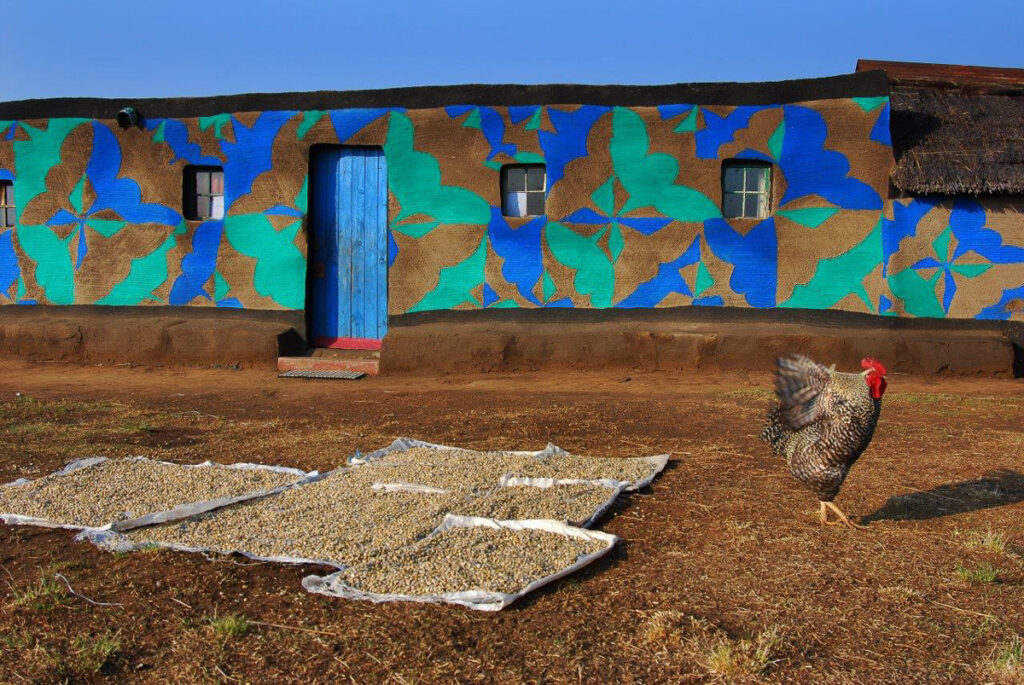
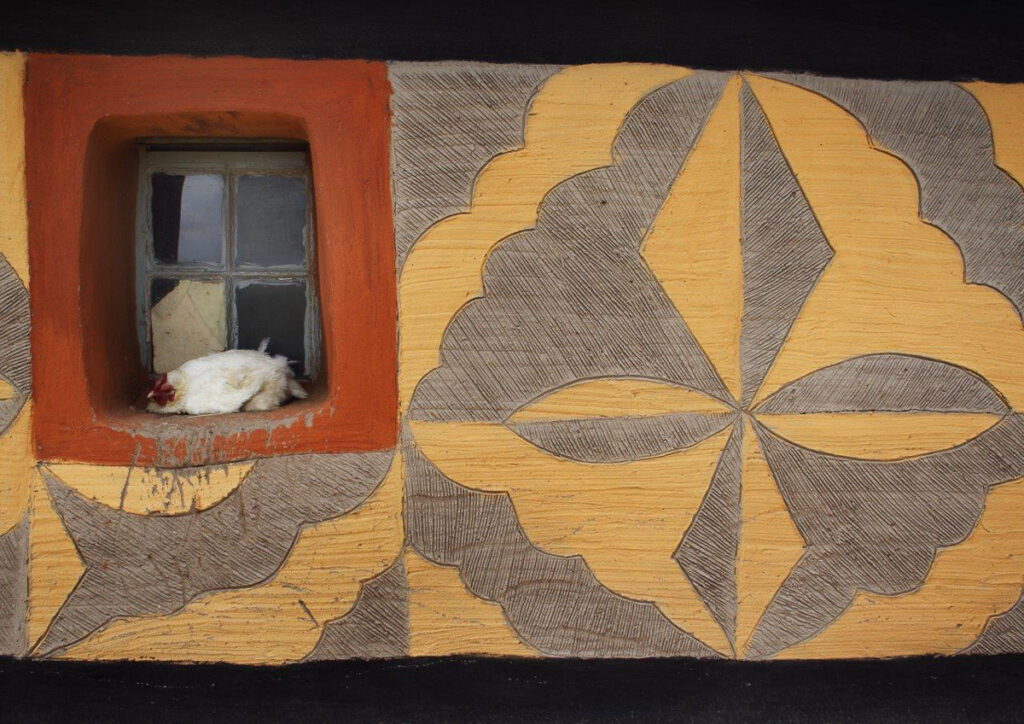




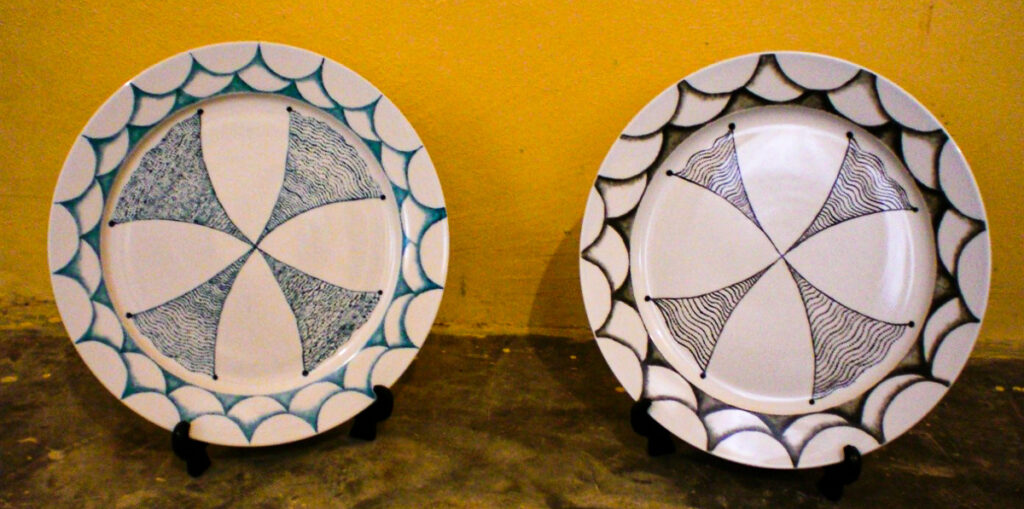
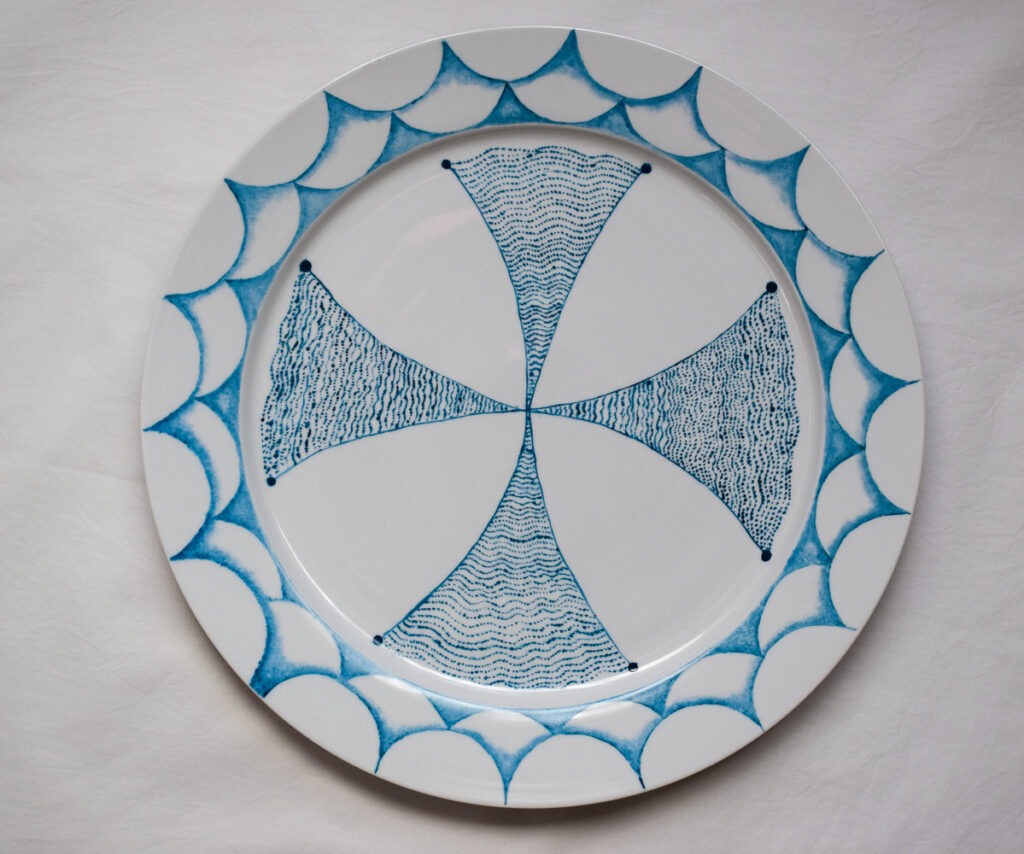

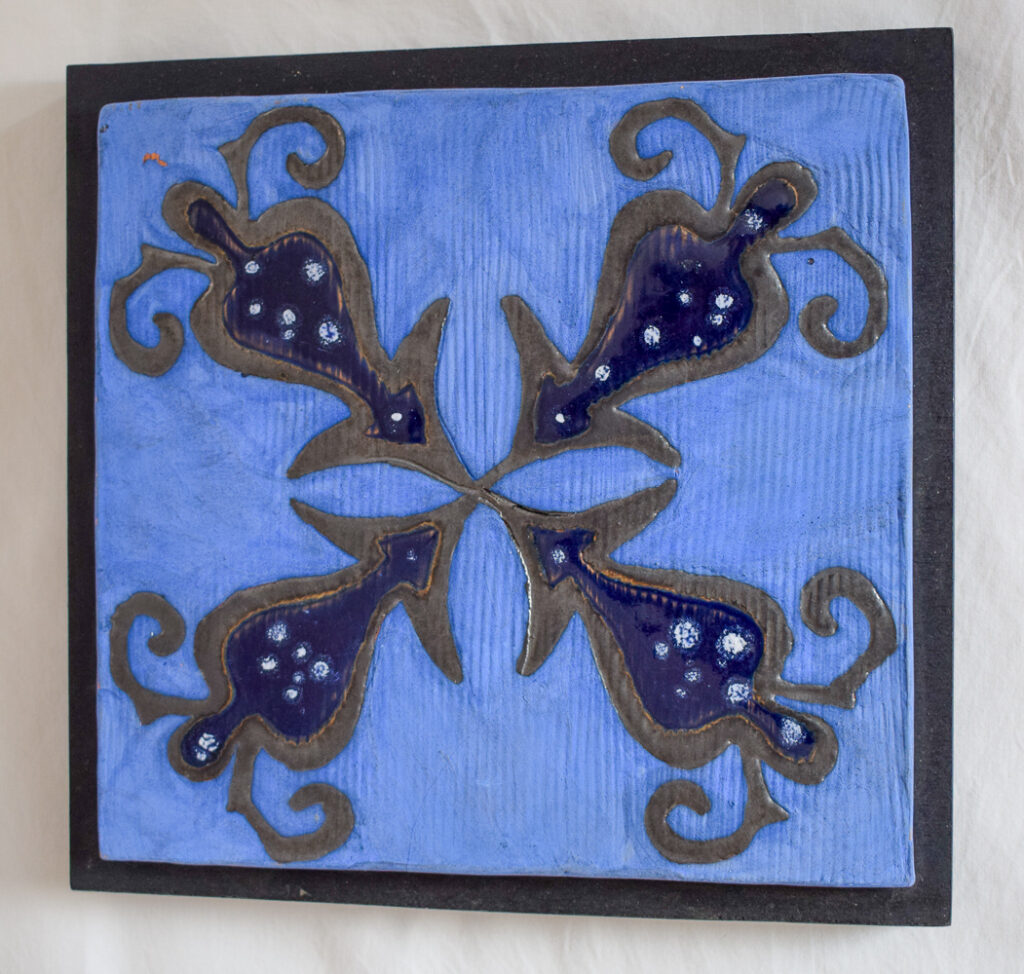

Comments
Beautiful ceramics ♥️
A good read about Litema as an amazing indigenous Basotho practice. Interesting insight about meaning and significance of this traditional practice. It is rather sad nonetheless to learn that it is scarcely practised lately. Good illumination of this traditional aspect and its value, with an interesting piece of writing.
Inspiring to read about and see the photos of homes with litema patterns, a form of large scale drawing – and the delightful surprise of reading the credit line ‘Teenager artists trio’ for on of the brilliant designs 🙂
Matsooana’s monochrome drawings on plates are also wonderful. Thanks for giving readers some insight into this cultural practice and its contemporatry transformations.
Thank your for all the great history of this beautiful art form! I live in Washington State of the USA and we are teaching out Scouts about symmetry in nature and art. Litema wall designs are one of the things we are teaching them. We will definitely be sharing the history and the beautiful photos with our Scouts!